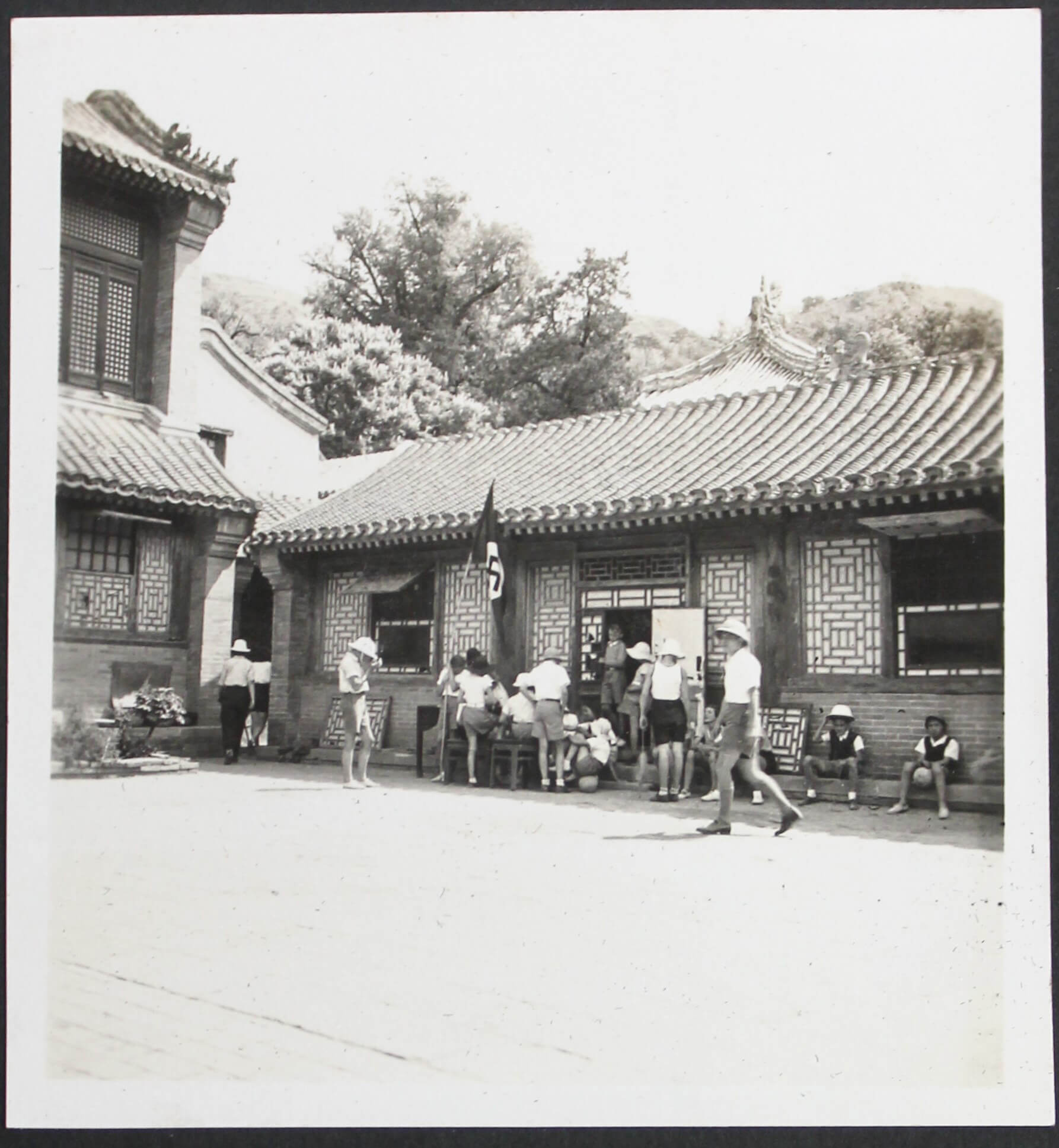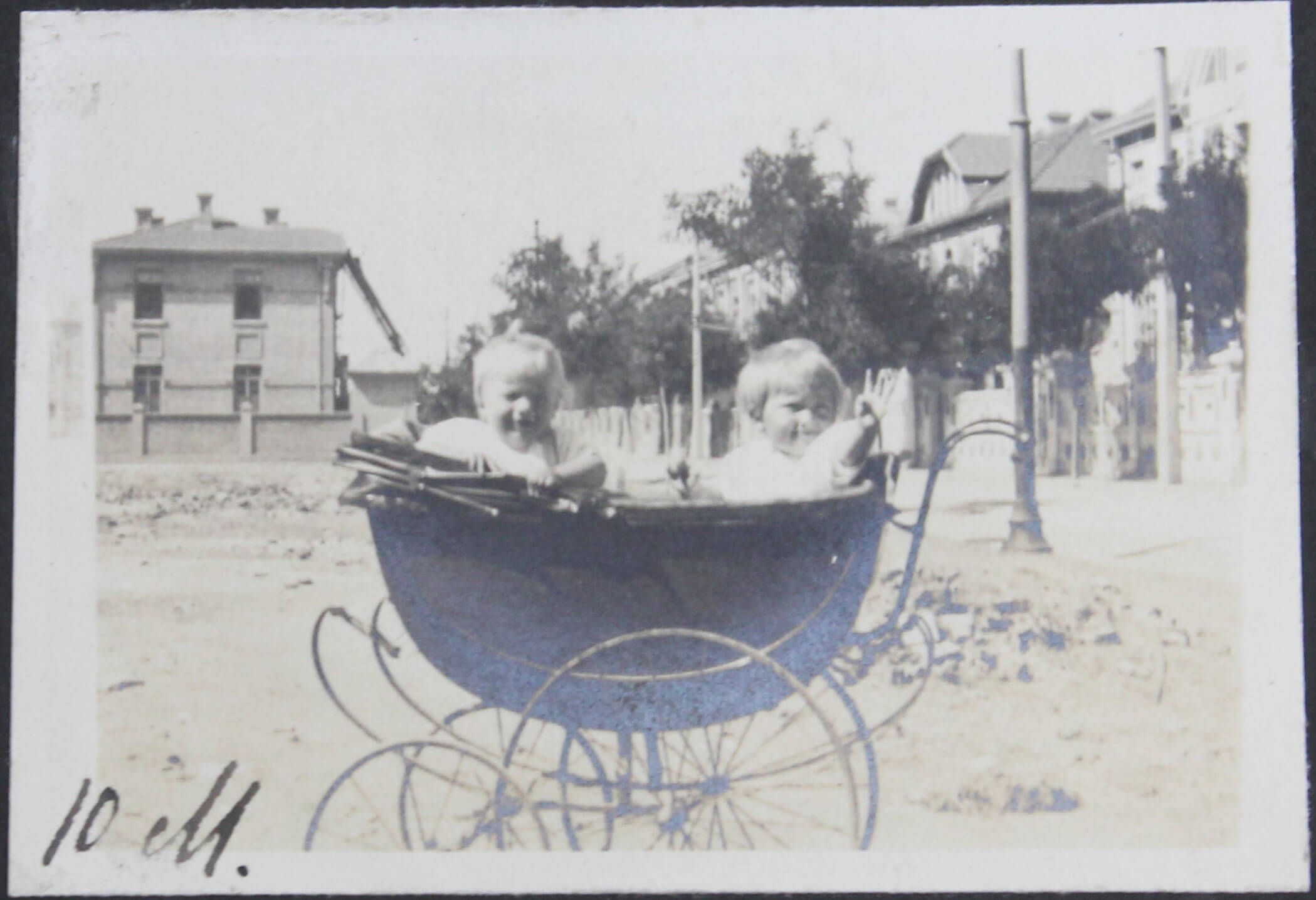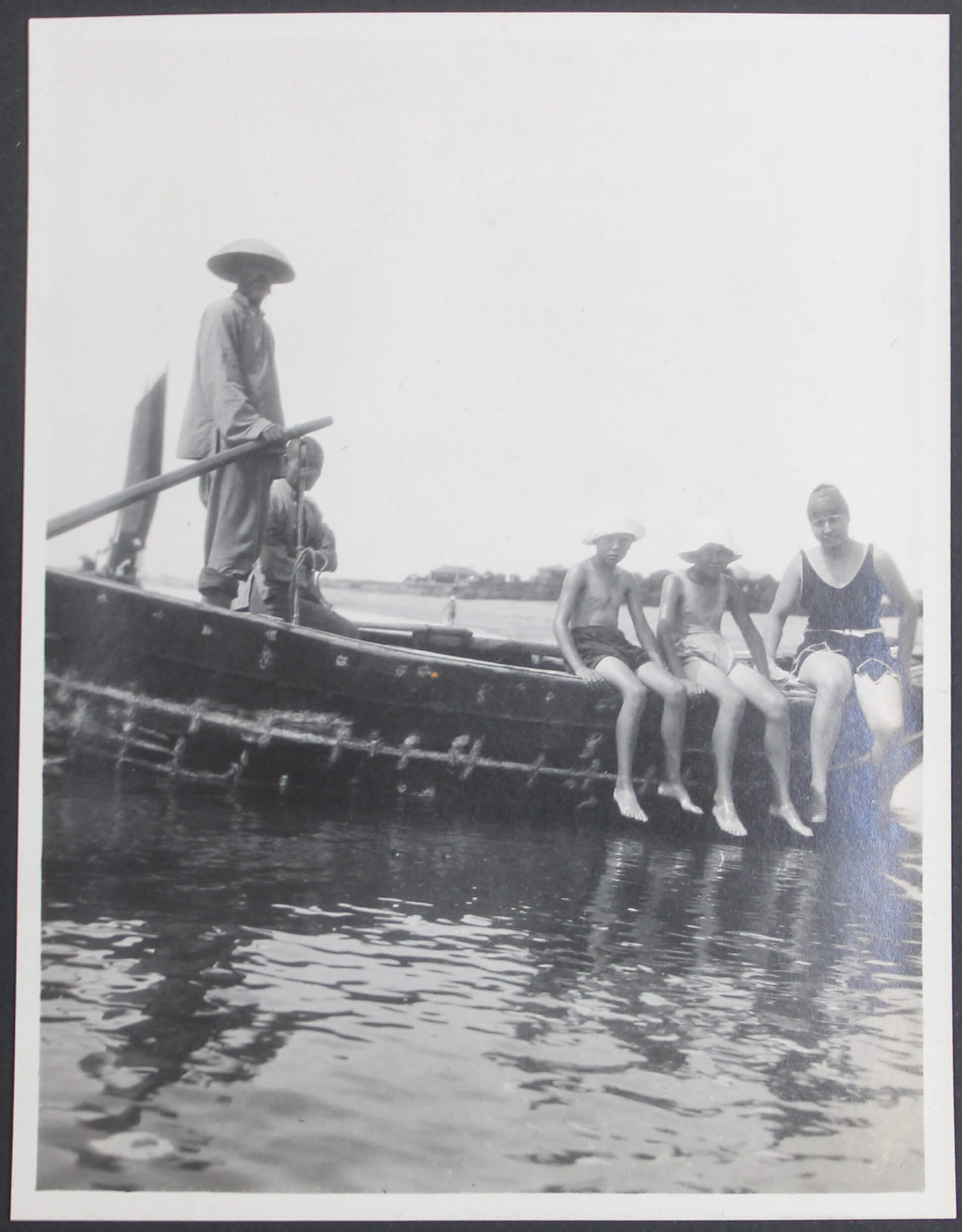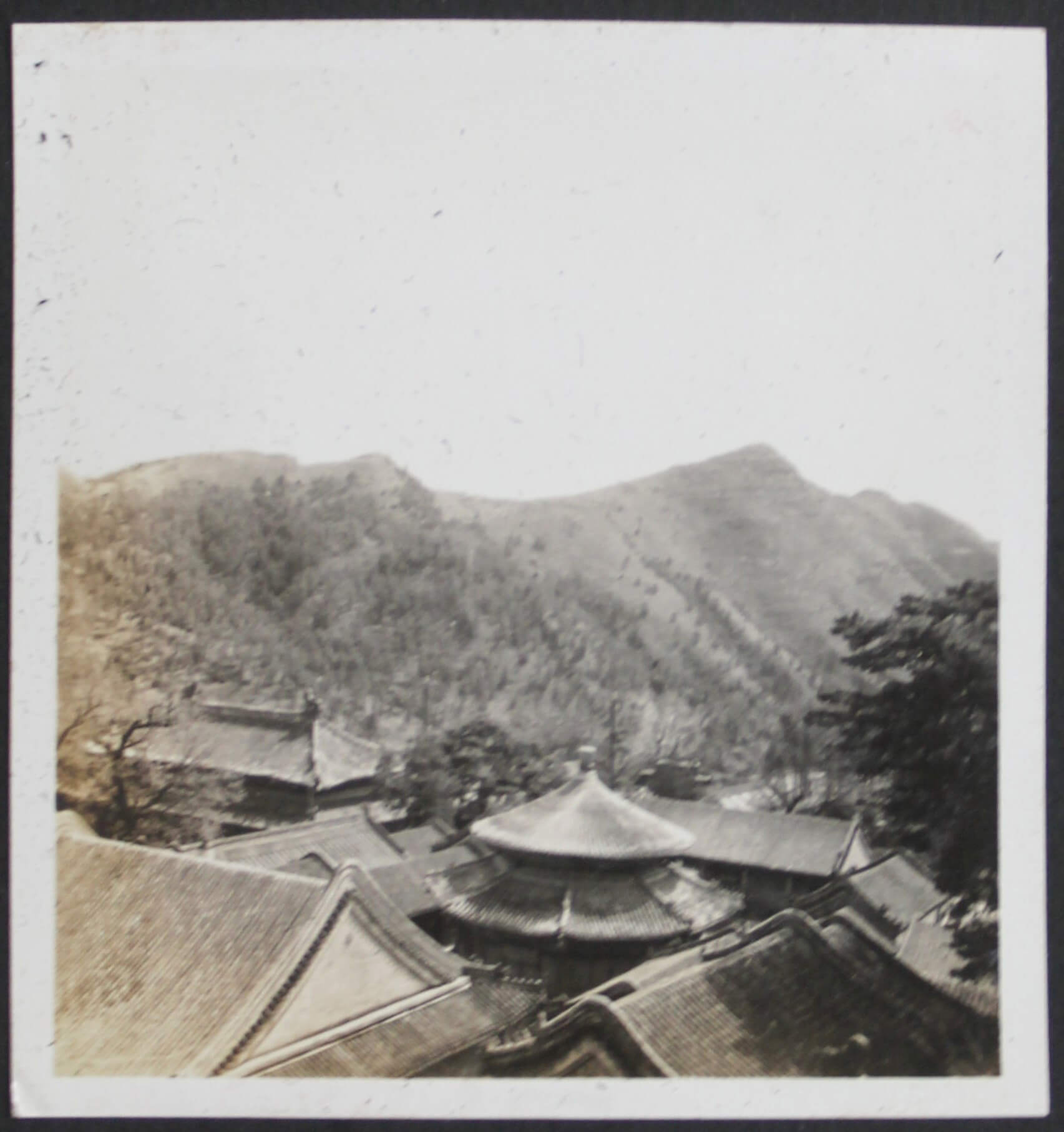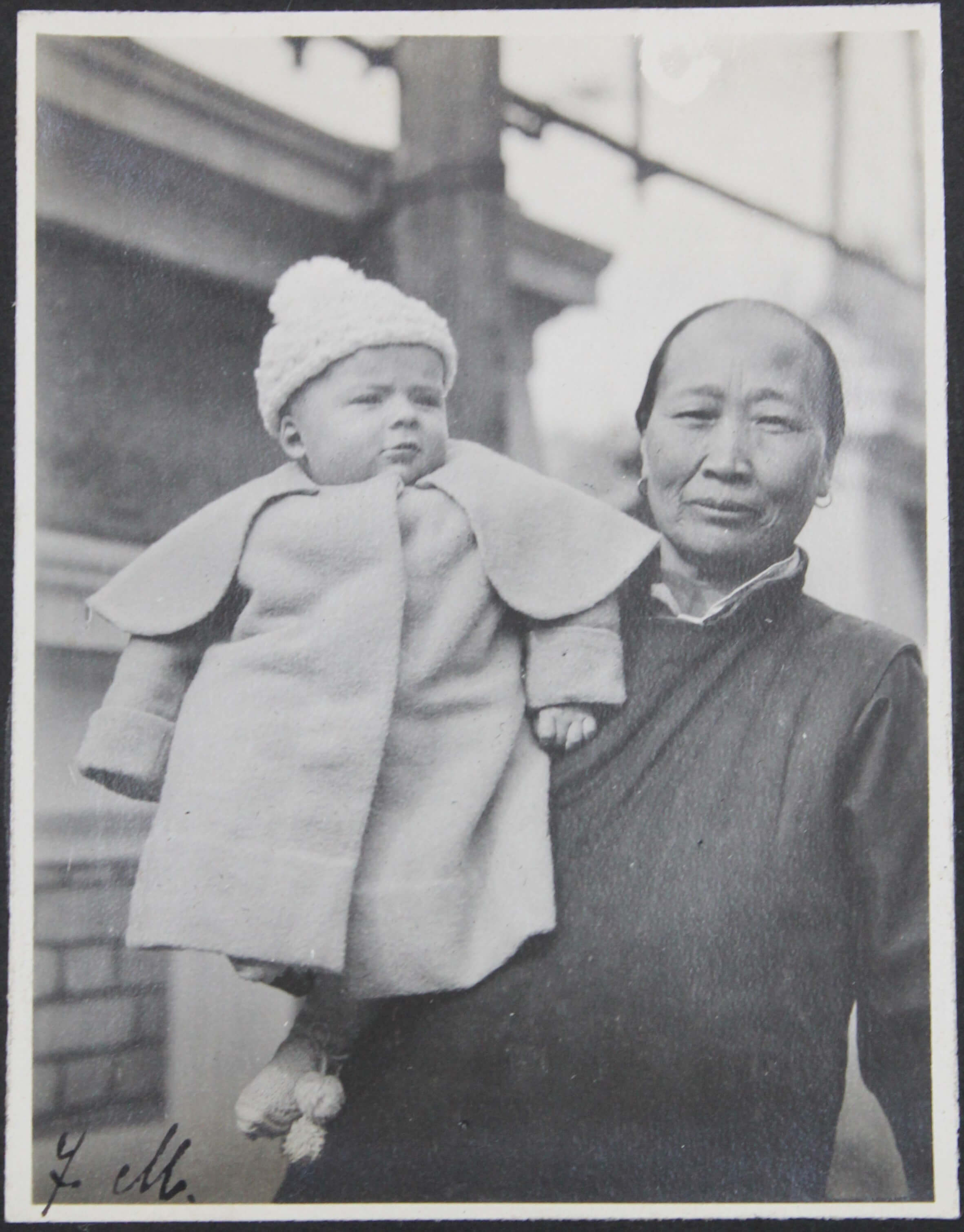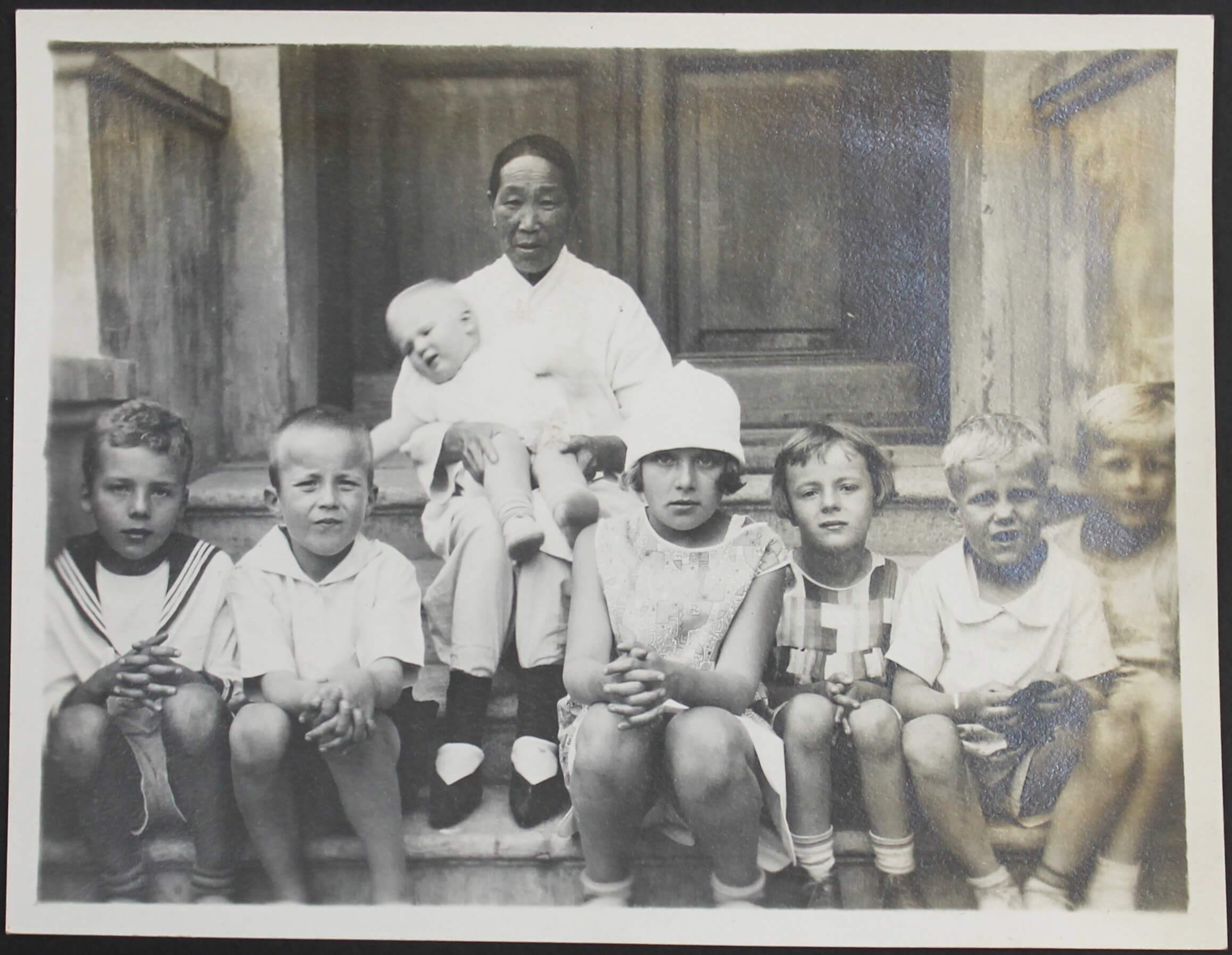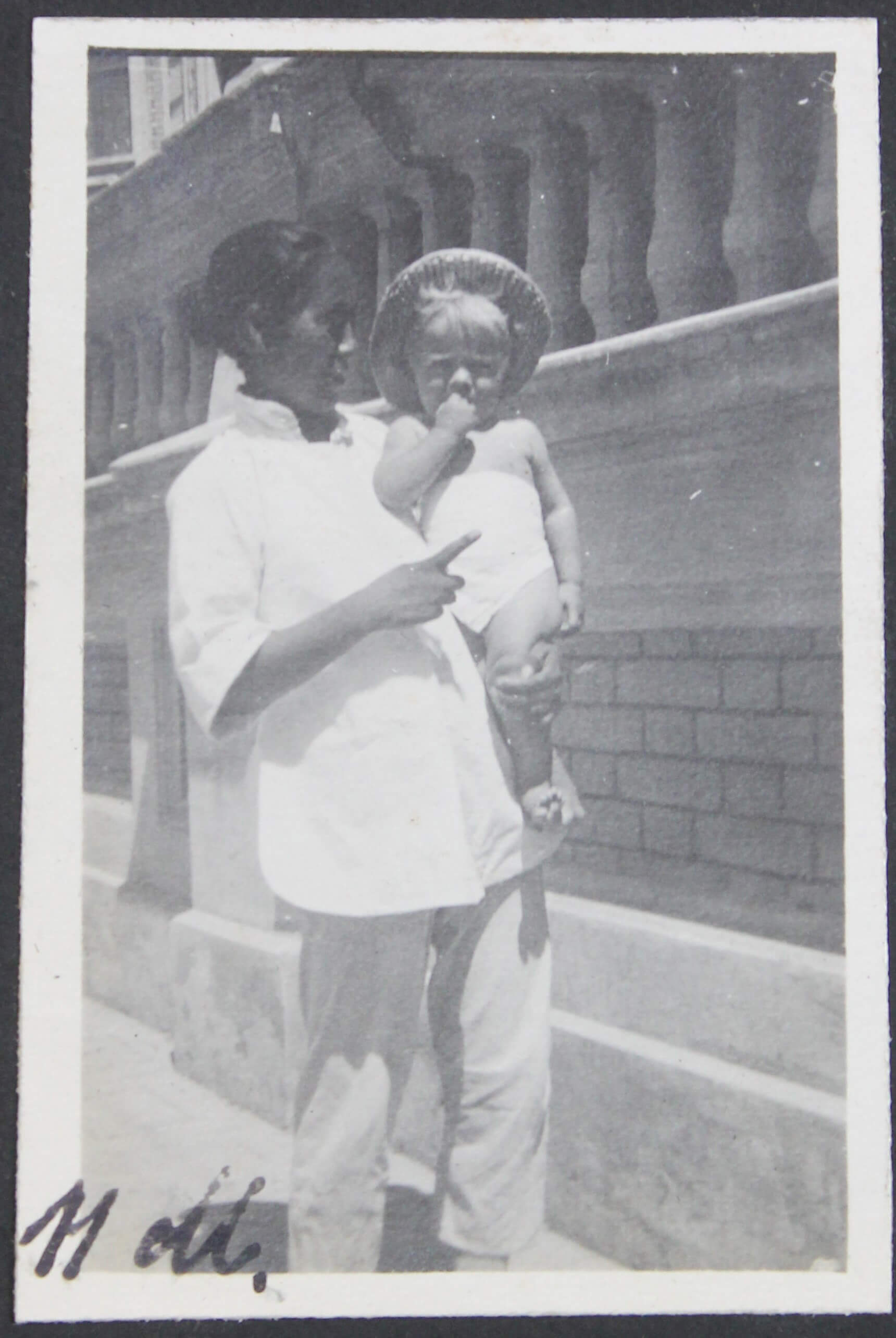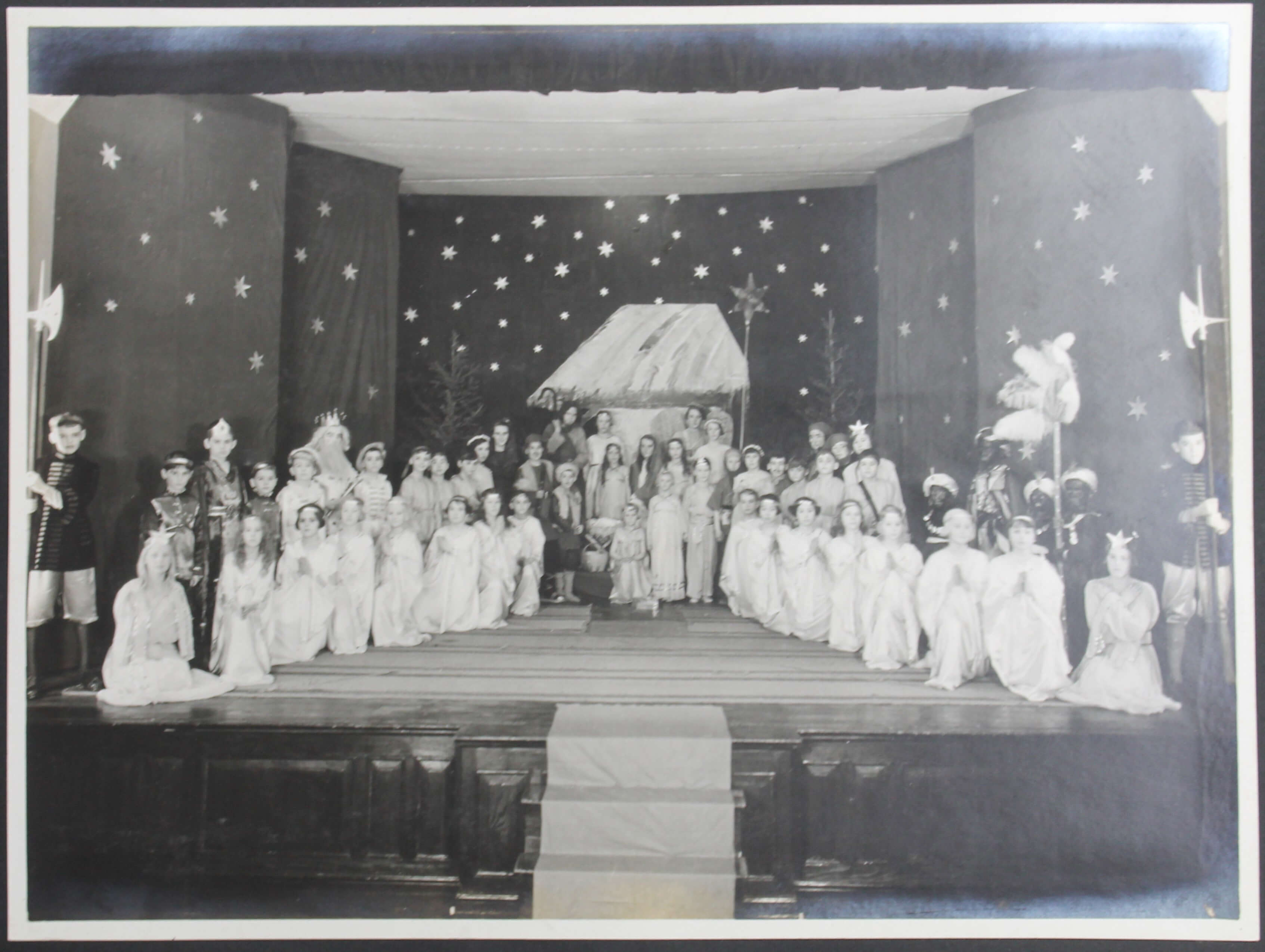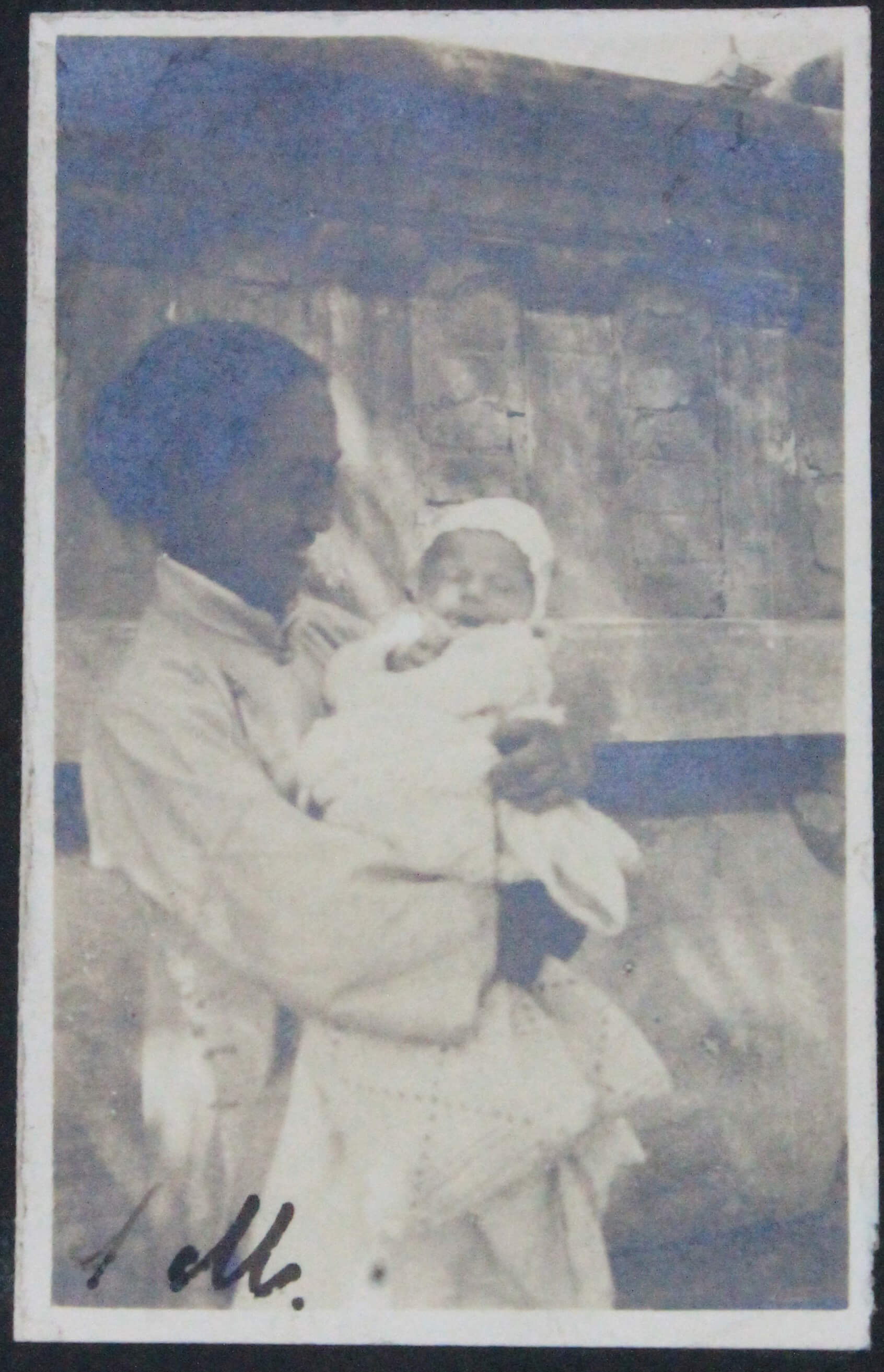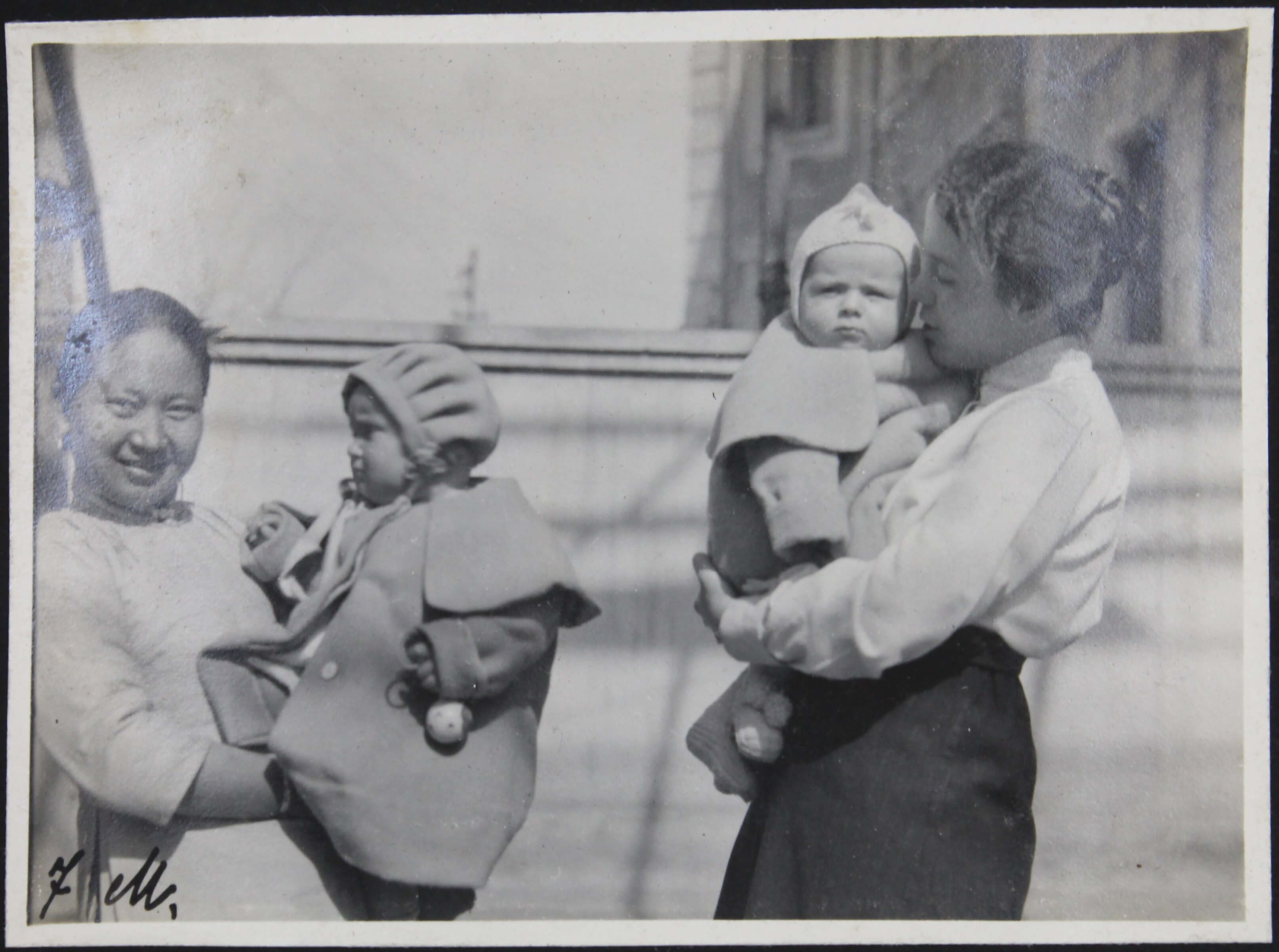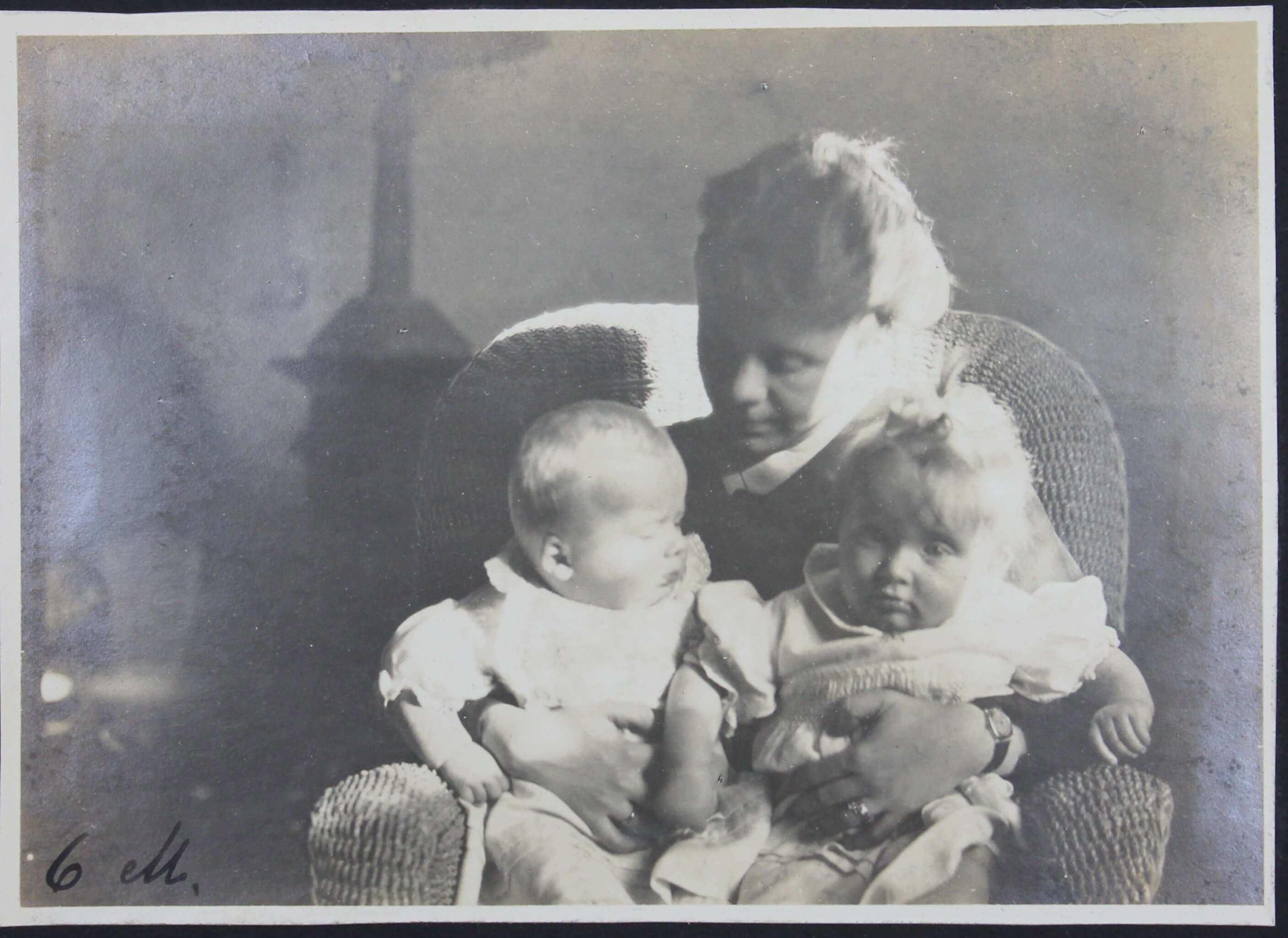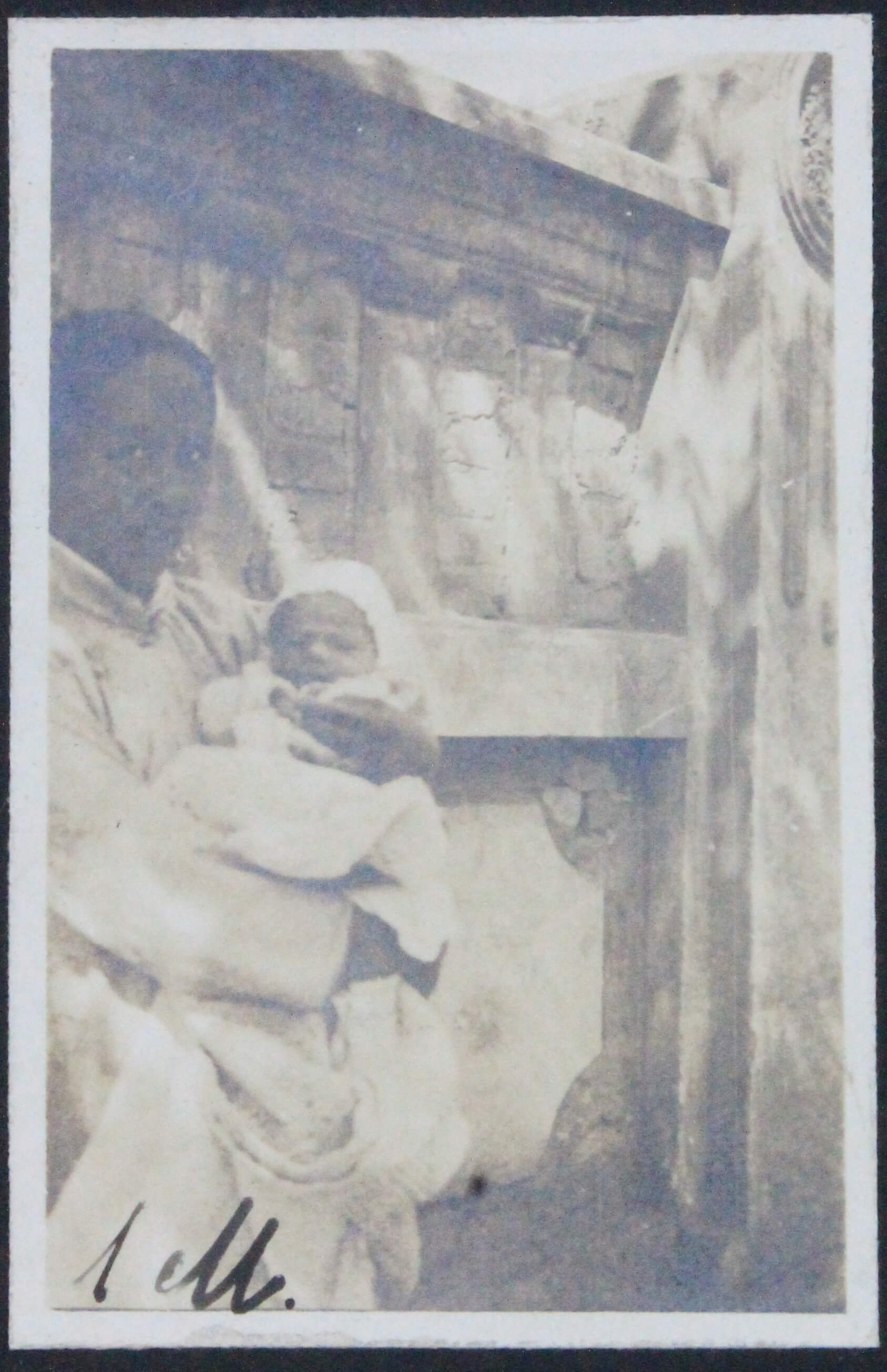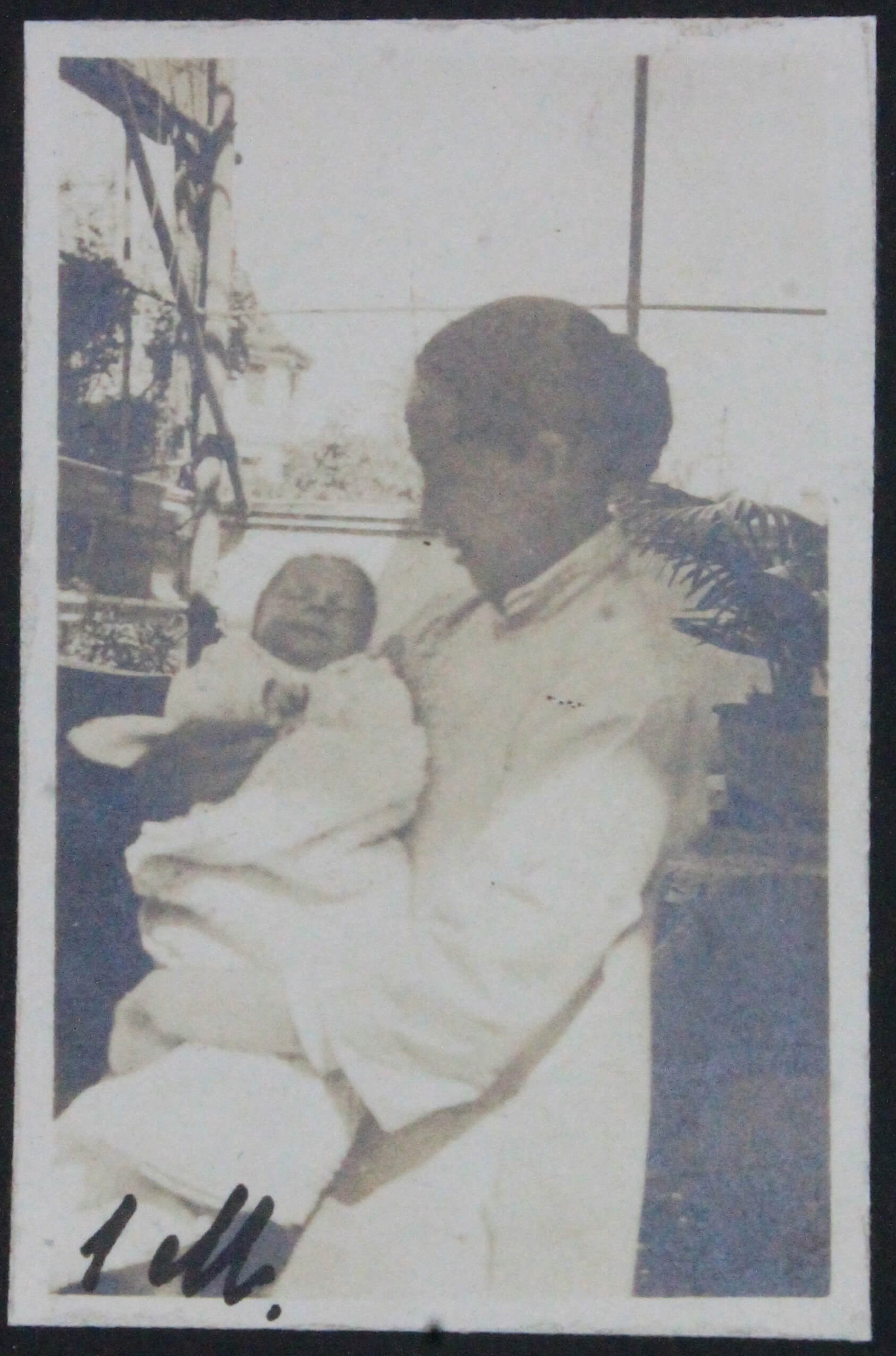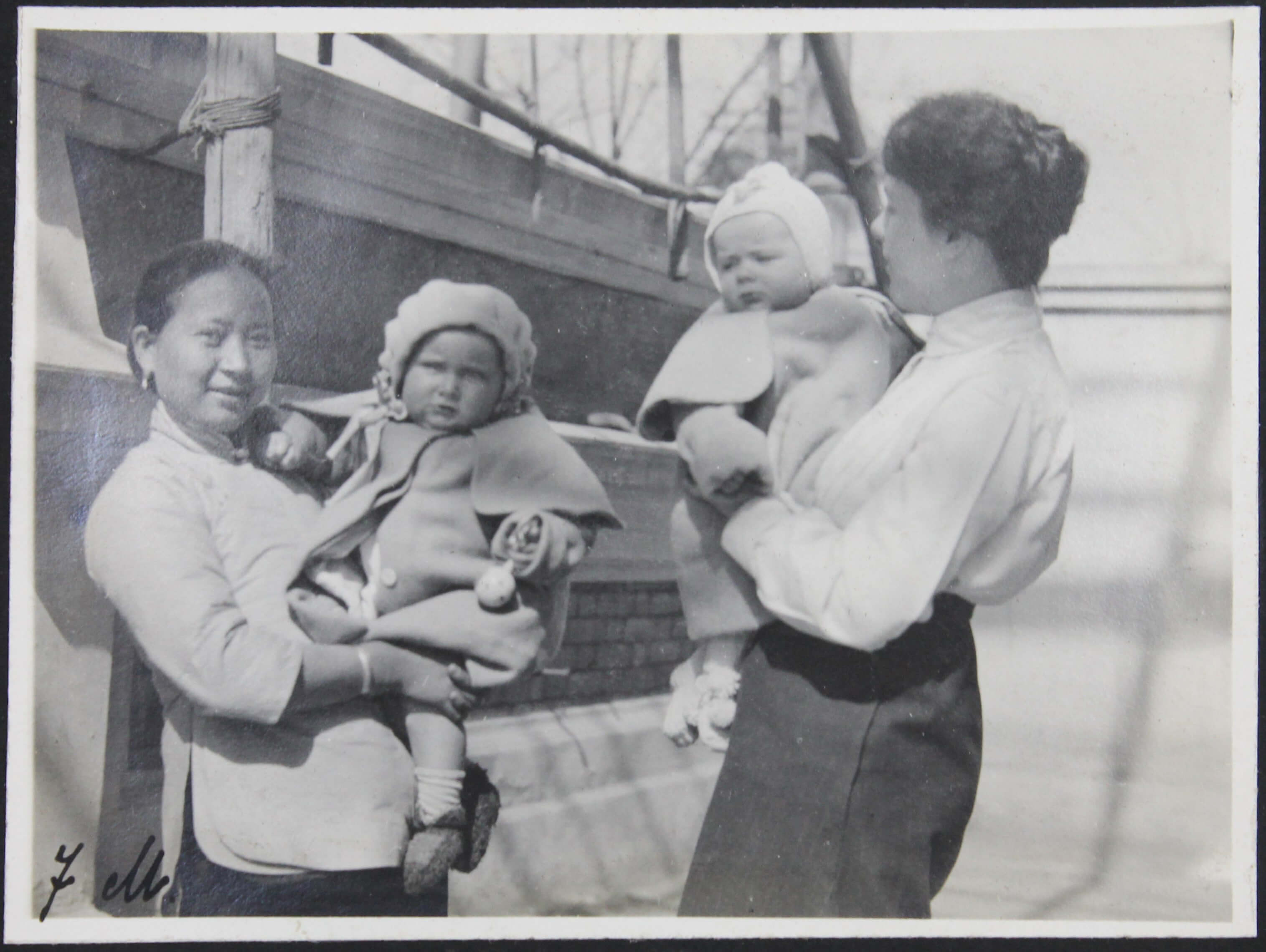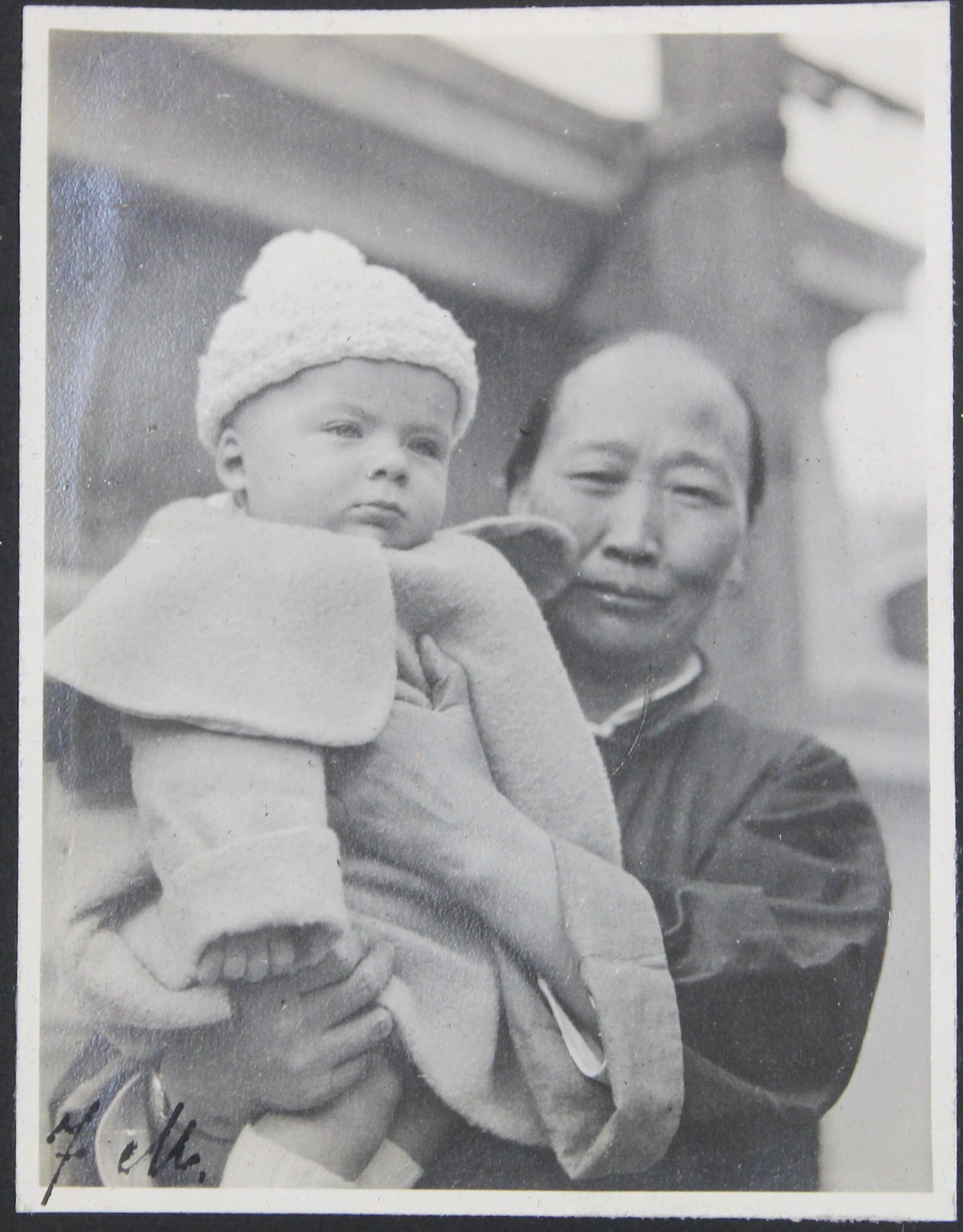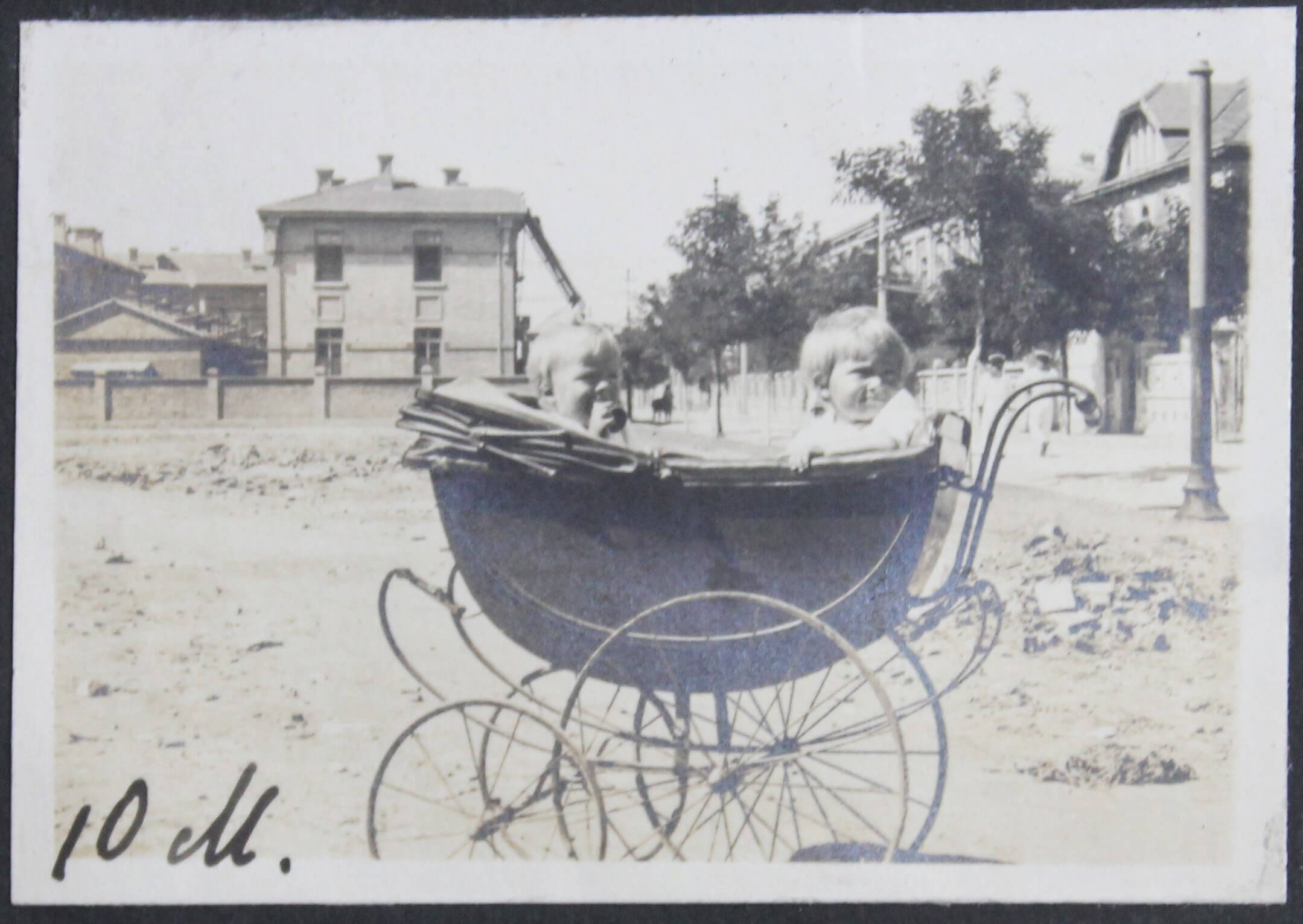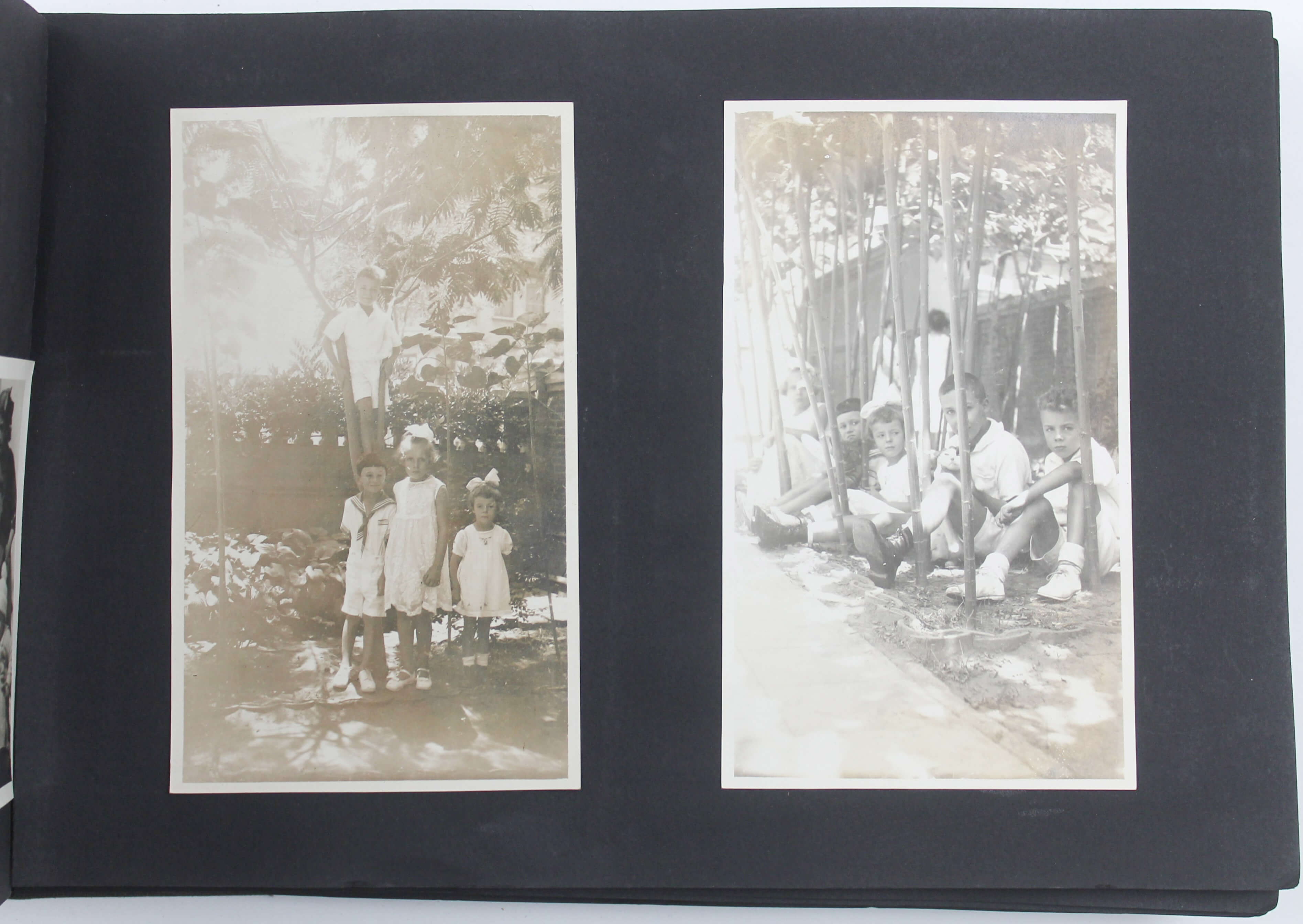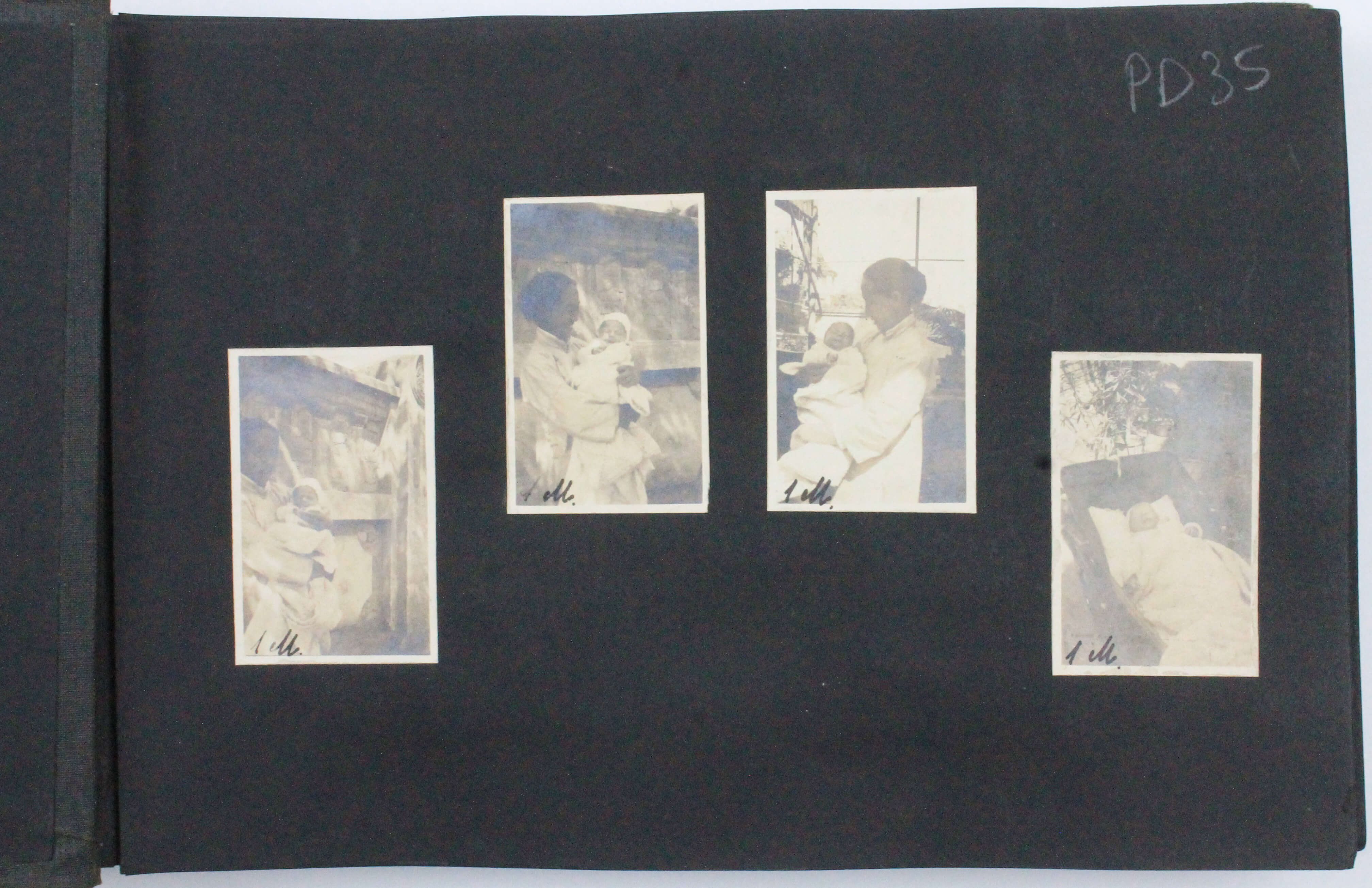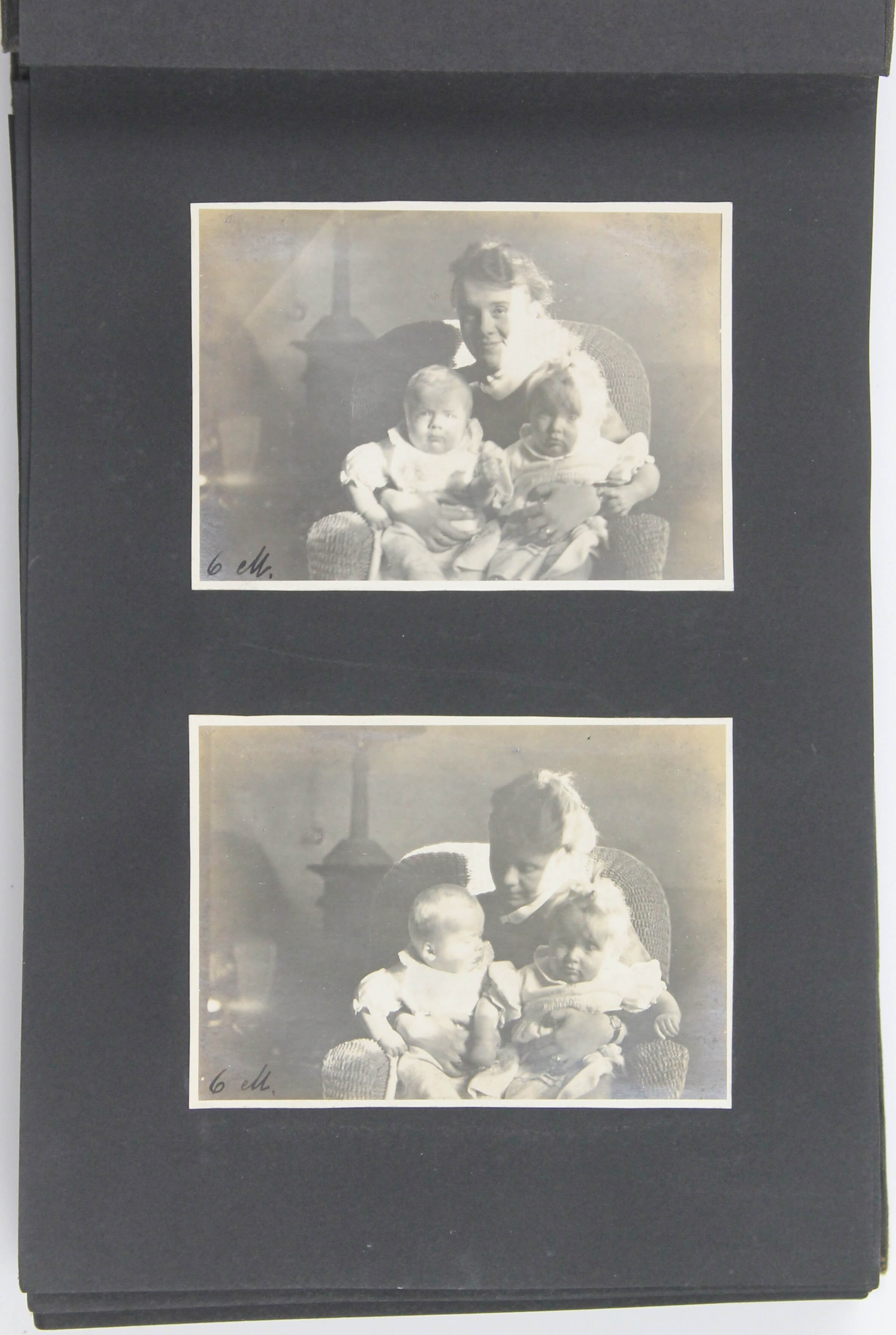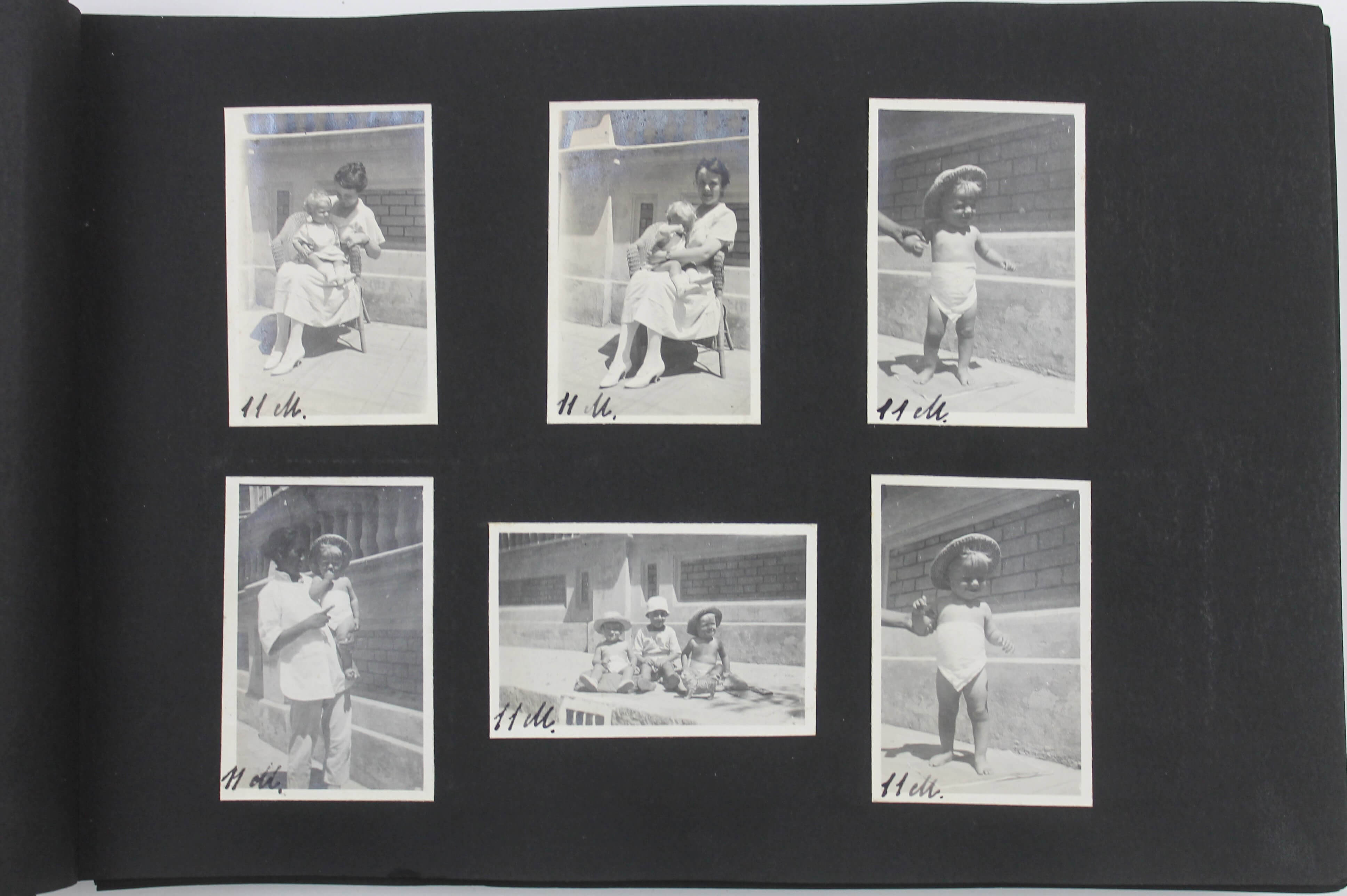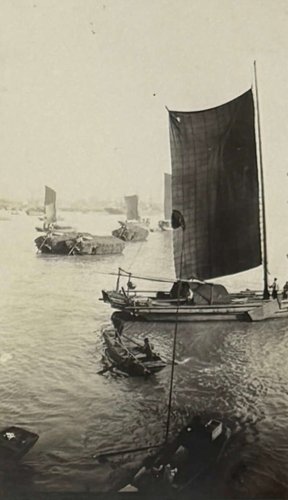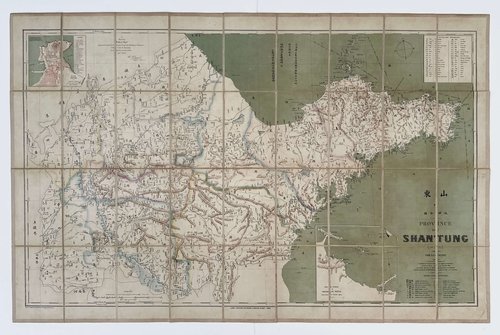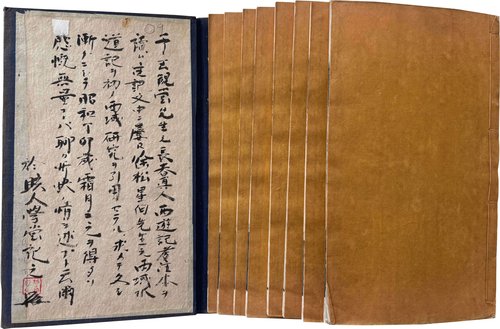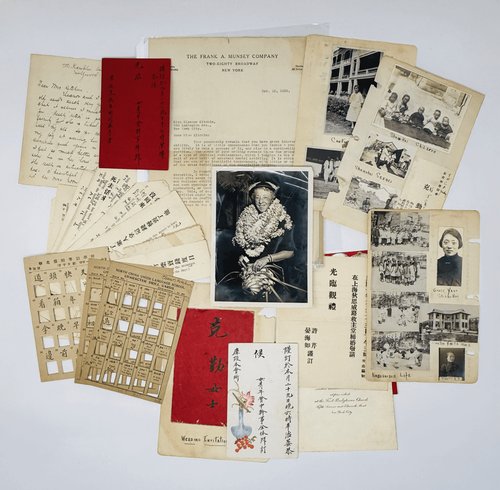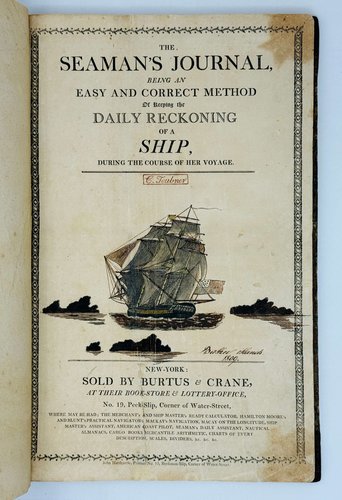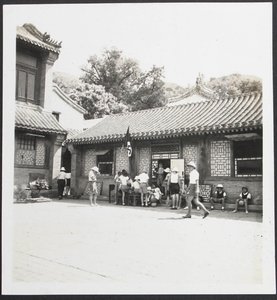
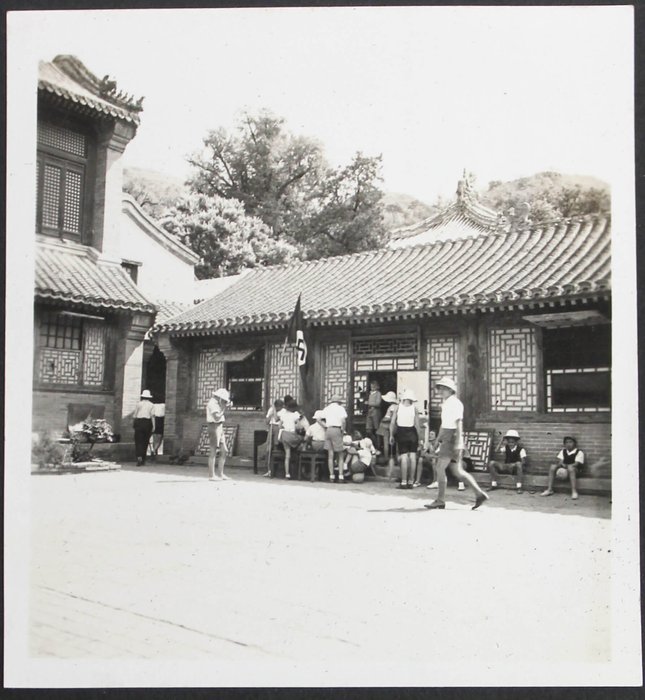
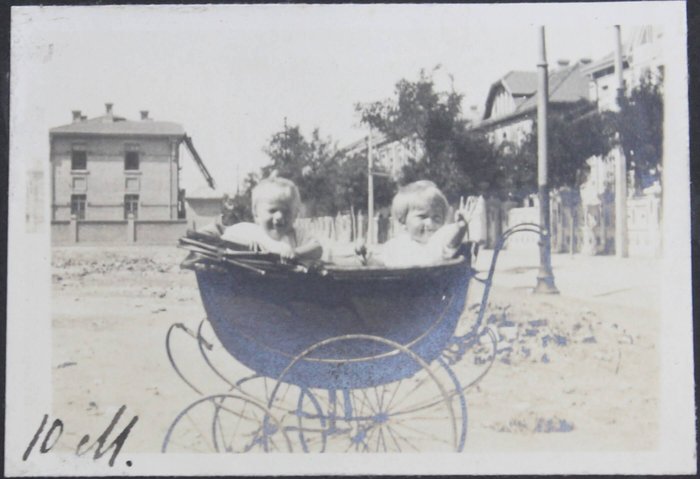
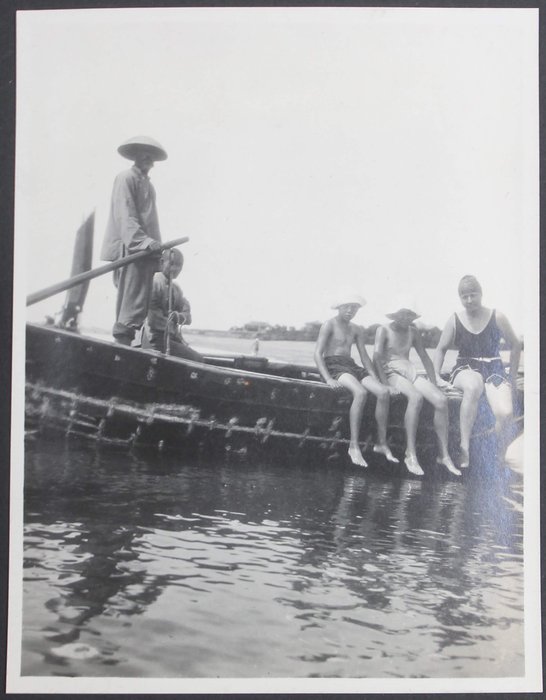
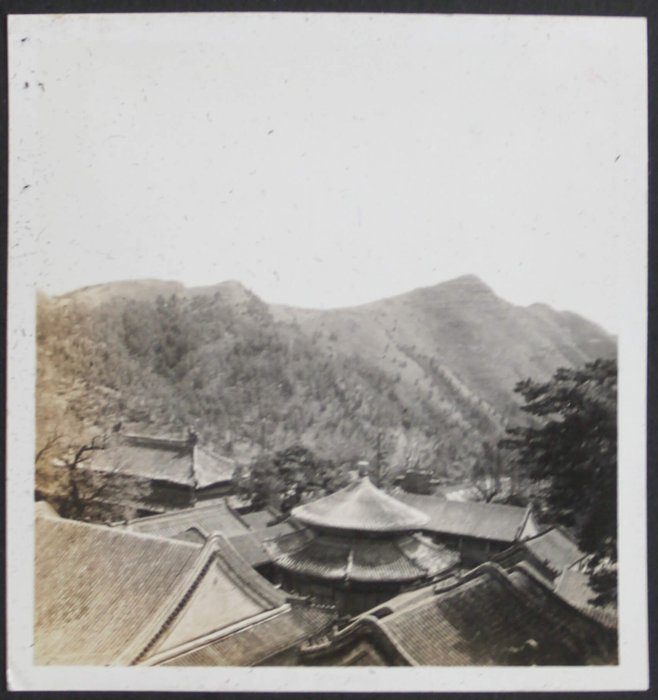
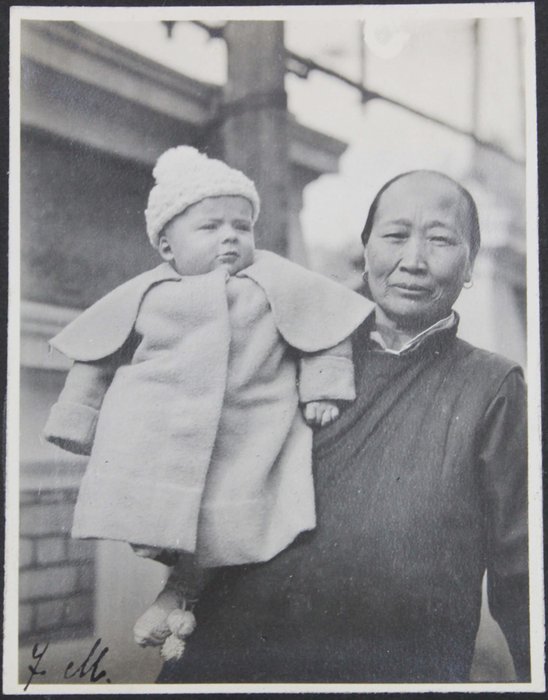
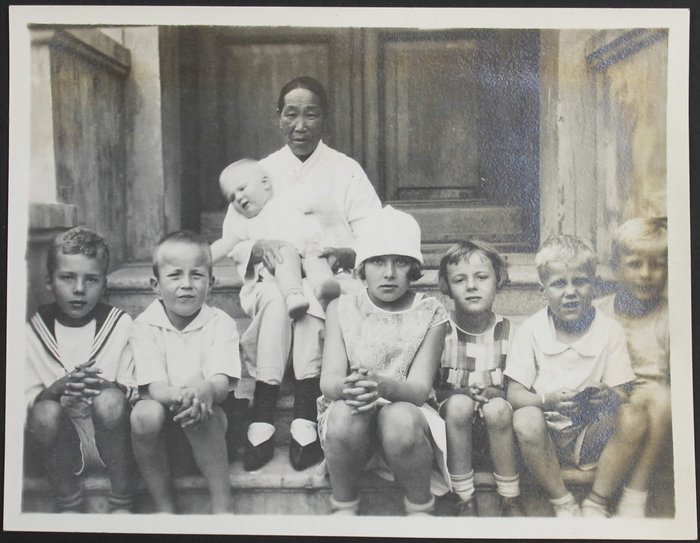
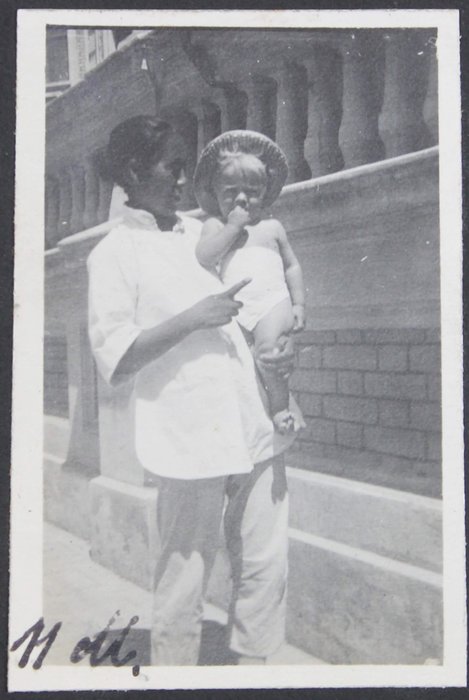
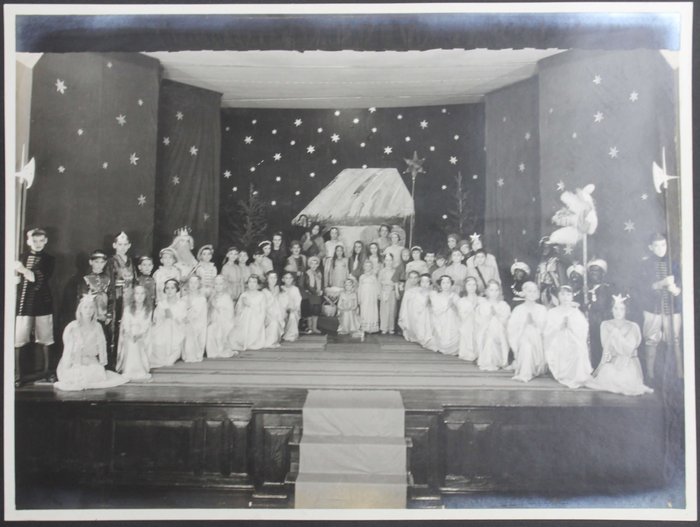
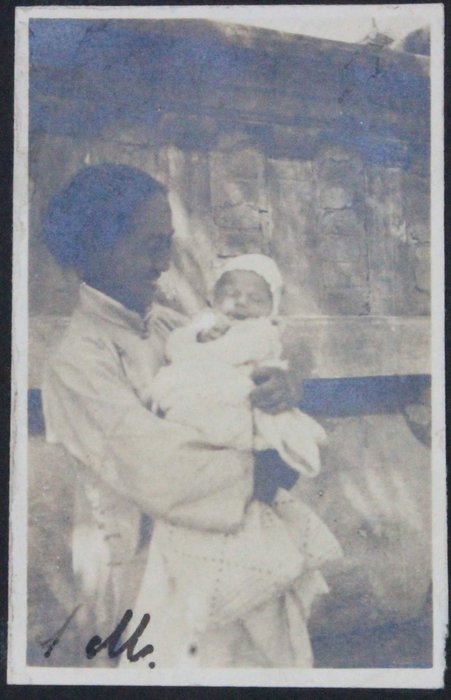
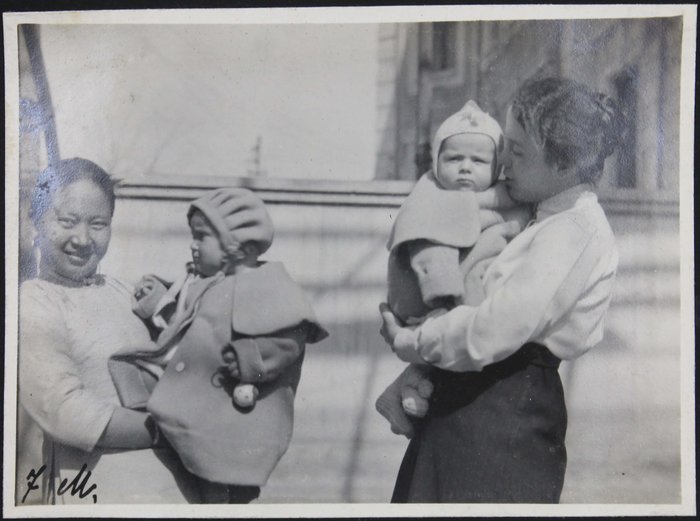
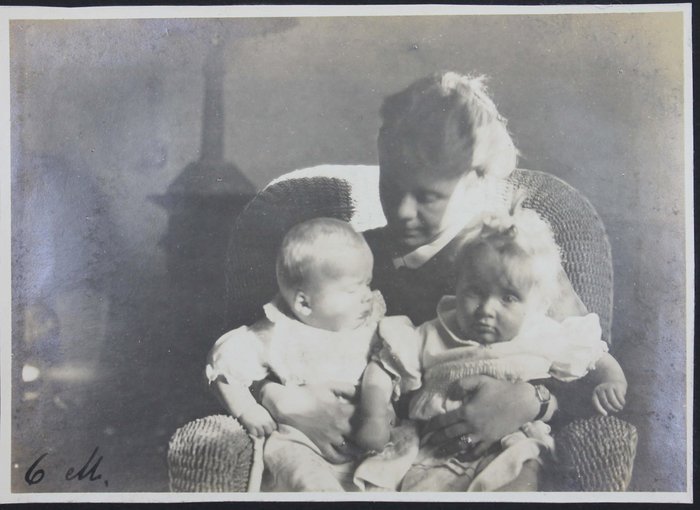
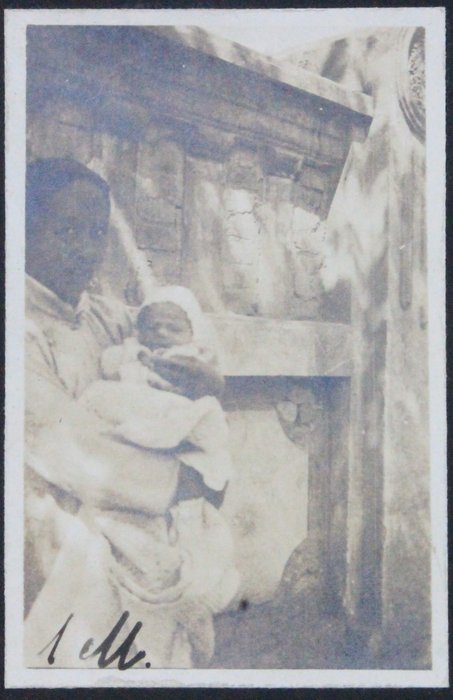
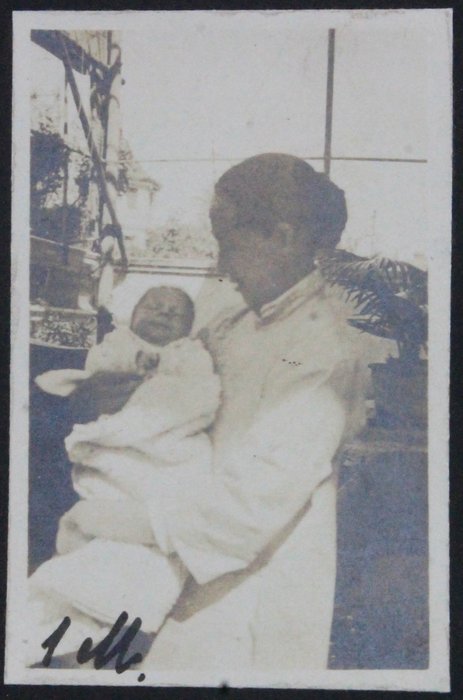
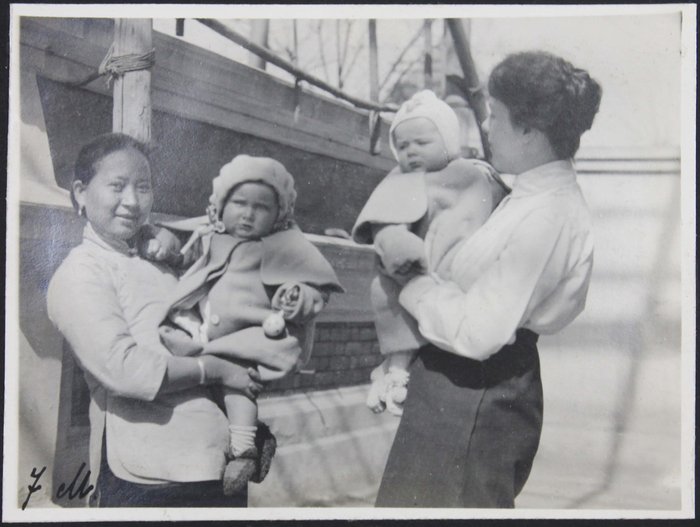
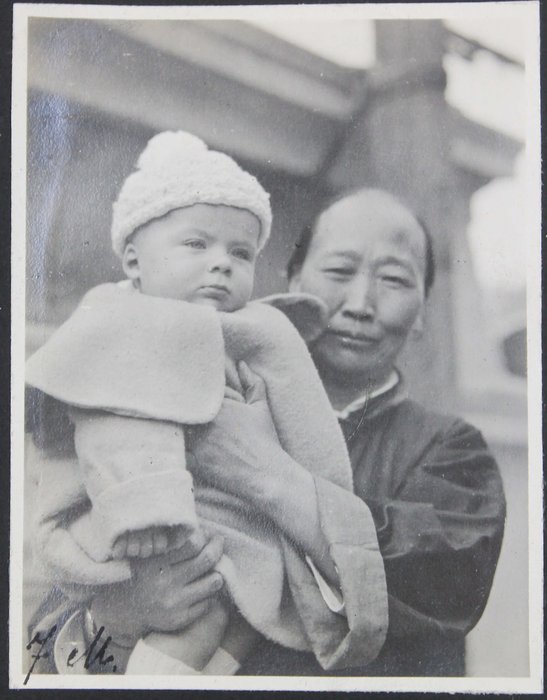
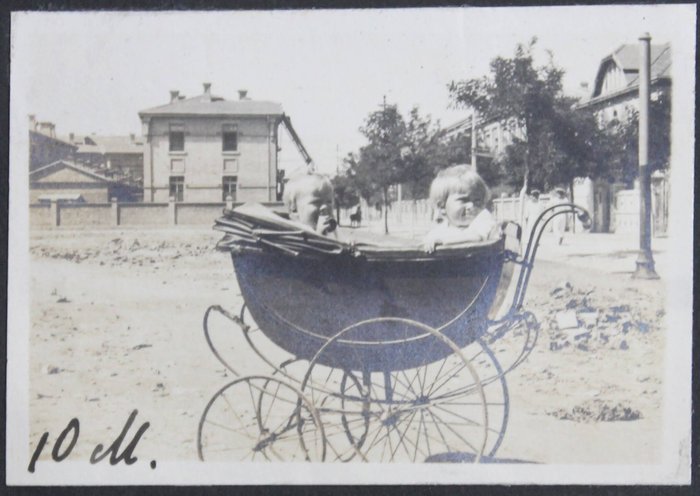
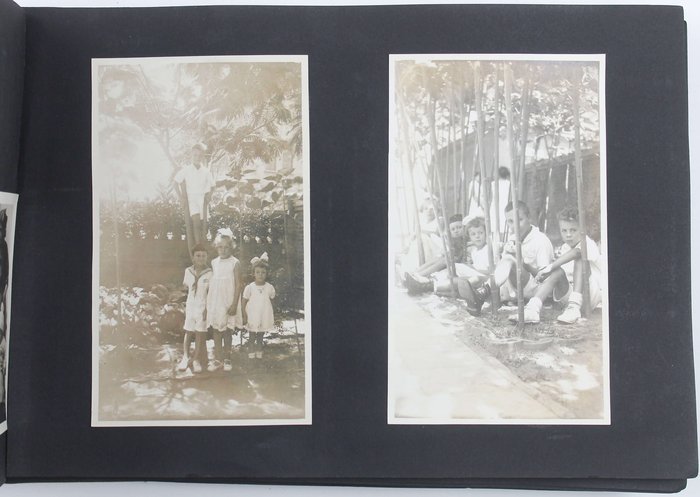
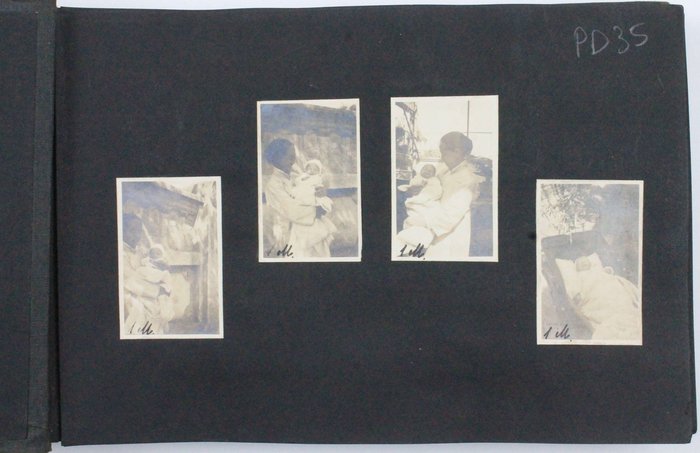
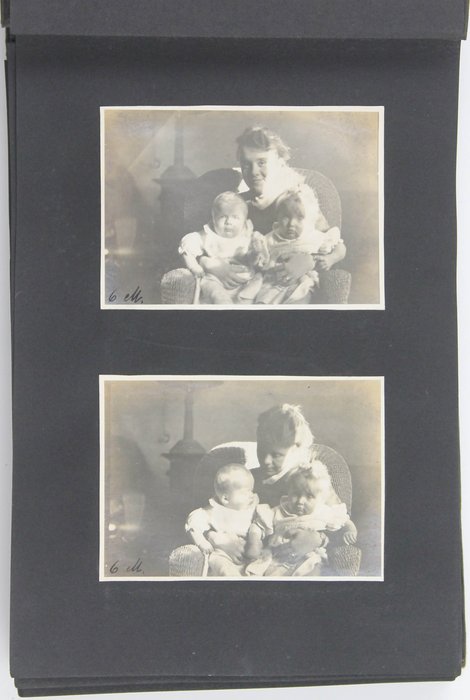
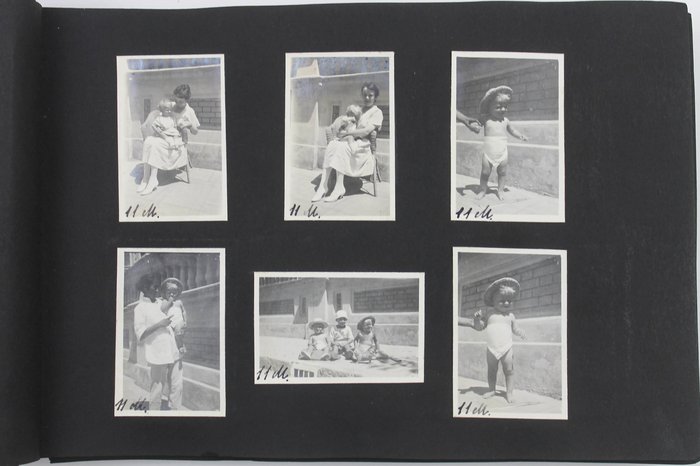
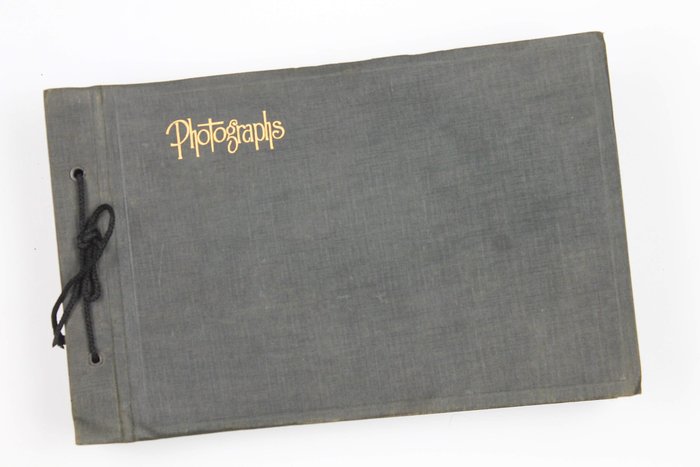
#PD35
Ca. 1920s-1930s
Oblong Quarto album (ca. 18,3x28,8 cm). 45 card-stock leaves (10 blank). With 239 mounted original gelatin silver photographs, with the larger ones from ca. 15,4x24 cm (6 x 9 ½ in) to 14,7x9,9 cm (5 ¾ x 4 in), the smaller ones ca. 6,6x4,2 cm (2 ½ x 1 ¾ in), and the rest ca. 13,8x8,2 cm (5 ½ x 3 ½ in). About half of the photos with captions (only indicating the age of a baby), 1 photo dated. Period full-cloth album fastened with a string; gilt-tooled generic title “Photographs” on the front board; paper label of “The J. L. Hanson Co, Chicago” on the back side of the rear board. About twenty pages detached, occasional silvering, but overall a very good album with strong, interesting photos.
Historically interesting collection of lively vernacular photos illustrating the life of an upper-class German family in Beijing during the 1920s-1930s.
According to the photographs, the family was likely connected to the German military, stationed in Beijing from the 1920s until Japan’s invasion in 1937. During this period, Germany maintained strong economic and military ties with China, providing military advisors and technical assistance to the Nationalist government. The presence of a high-ranking German family suggests they may have been part of this mission, involved in military training, arms trade, or diplomatic efforts.
The album contains 239 rare original photos likely taken by a female German expatriate in Beijing. About 160 images follow the compiler’s son from infancy, showing him strolling through Beijing streets with Chinese nannies, riding in carts pulled by local coolies, and posing in military uniforms and Chinese conical hats with other Western children. Especially interesting are about fifteen rare photos of a fascist youth camp, showing children beside fascist flags and Chinese courtyard houses, dressed in uniform, and participating in group activities. There are also several excellent large-size photographs of a local German school, capturing costumed Christmas Eve performances and classroom scenes. The rest of the photos likely show the compiler’s husband with other high-profile Europeans at an outdoor picnic, fascist flags displayed on buildings, and scenic views of Miaofeng Mountain, Tan Zhe Si temple roofs, and surrounding landscapes.
Overall, historically interesting collection of lively vernacular photos illustrating the life of an upper-class German family in Beijing during the 1920s-1930s.

